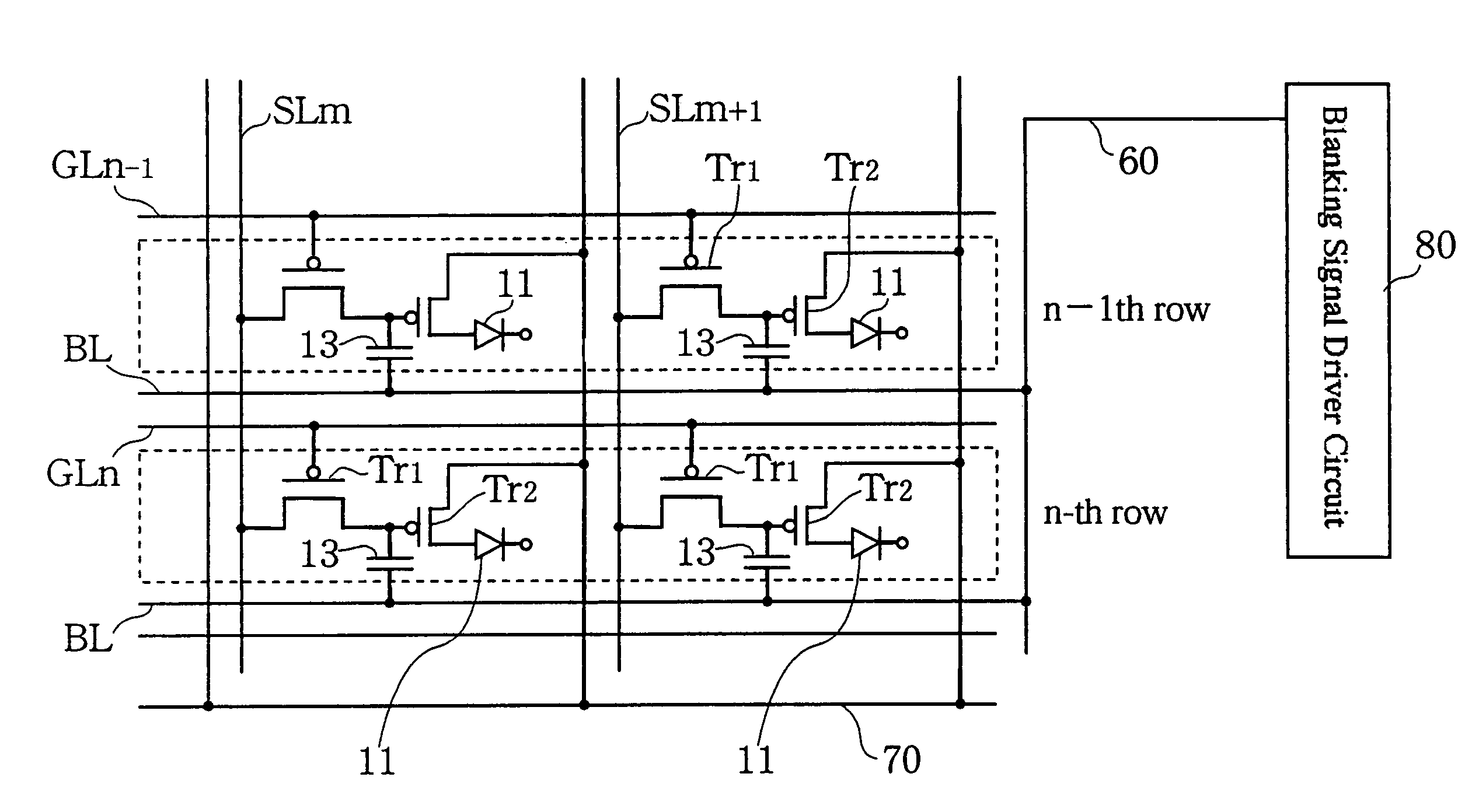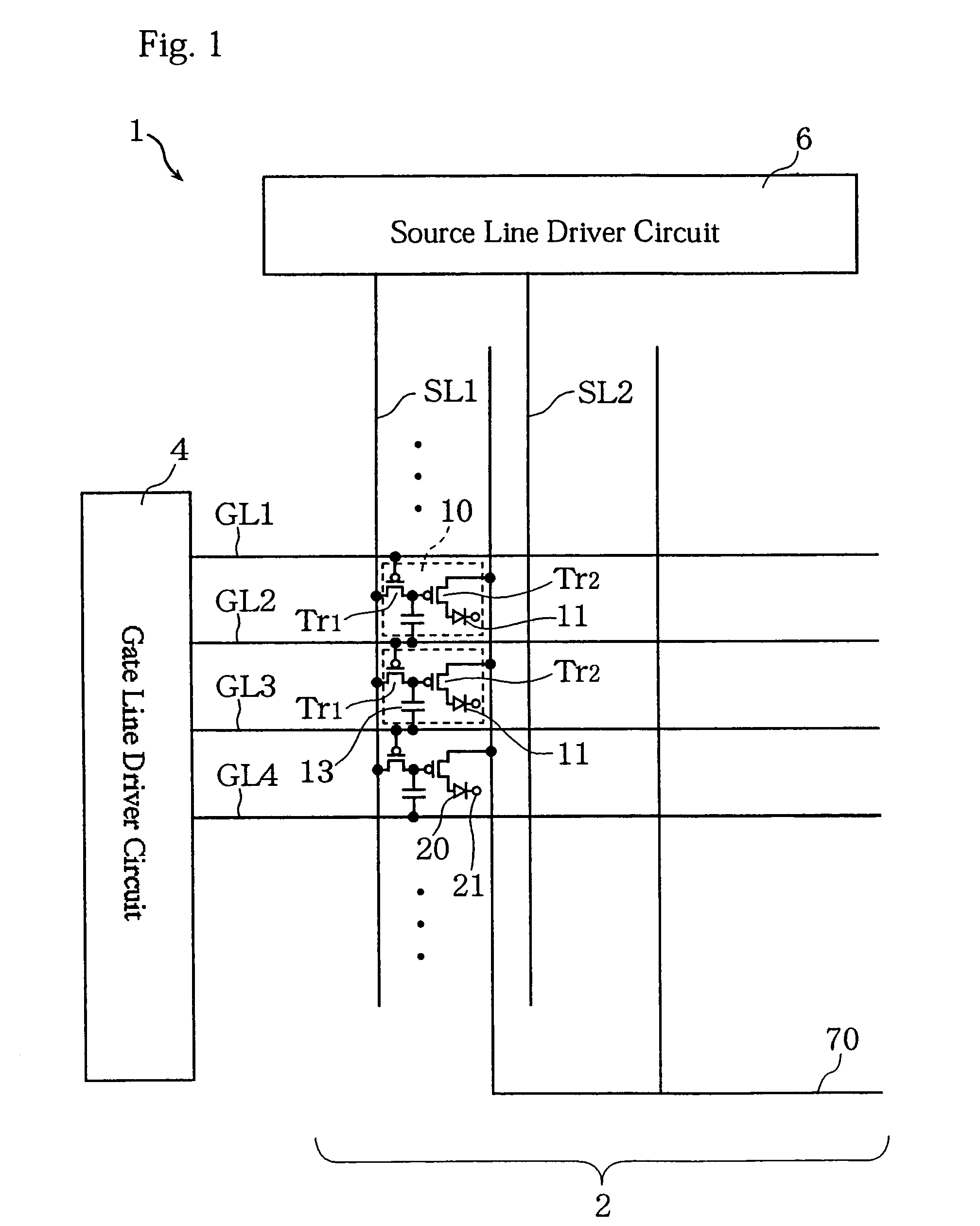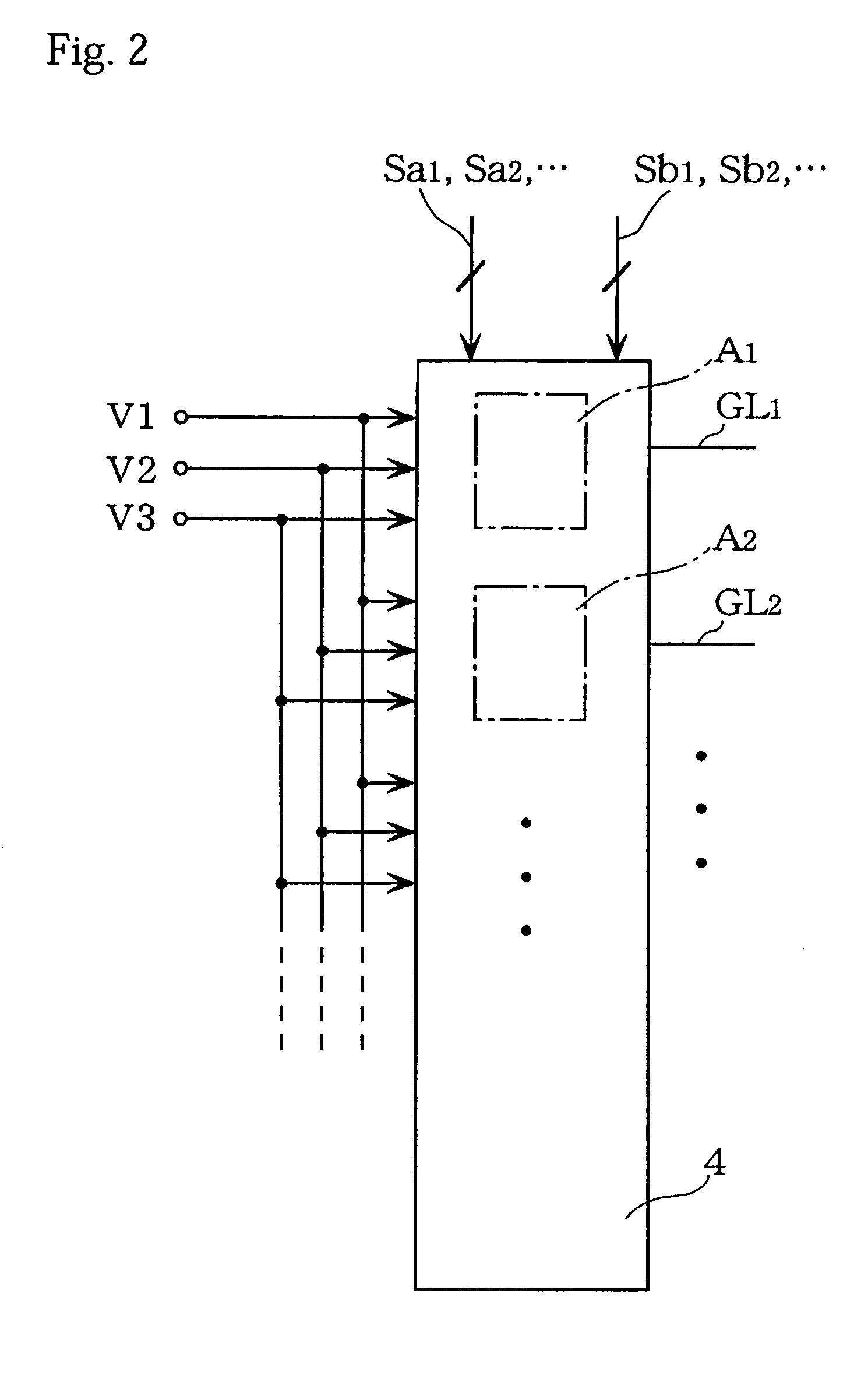EL display device providing means for delivery of blanking signals to pixel elements
a display device and blanking signal technology, applied in the field of electroluminescent display devices, can solve the problems of reducing the aperture ratio of pixels and the increase of dedicated transistors, and achieve the effect of excellent gray-scale performance and uniform display
- Summary
- Abstract
- Description
- Claims
- Application Information
AI Technical Summary
Benefits of technology
Problems solved by technology
Method used
Image
Examples
embodiment 1
[0084]FIG. 1 is a circuit diagram showing the configuration of an active matrix type EL display device according to Embodiment 1. An active matrix type EL display device 1 includes a display portion 2 having unit pixels 10 arranged in a matrix, a gate line driver circuit 4 for outputting scan signals to each of the unit pixels 10 via gate lines GL1, GL2, . . . (reference symbol GL will be used when collectively referring to the gate lines), a source line driver circuit 6 for outputting image signals to each of the unit pixels 10 via source lines SL1, SL2, . . . (reference symbol SL will be used when collectively referring to the source lines), and a current-supplying line 70 for supplying a current to each EL element 11.
[0085]The unit pixels 10 each includes the EL element 11, serving as an emitter of the unit pixel, a switching transistor Tr1, a driver transistor Tr2 for controlling the amount of driving current provided to the EL element 11, and an auxiliary capacitor 13. The auxi...
embodiment 2
[0105]FIG. 8 is a cross-sectional view showing the configuration of a pixel of an active matrix type EL display device according to Embodiment 2. Embodiment 2 is characterized in that transistors Tr1 and Tr2 are both N-channel transistors and that a cathode electrode of an EL element serves as a pixel electrode and an anode electrode serves as a counter electrode, except for which the configuration is the same as that of the foregoing Embodiment 1. In Embodiment 2, the cathode electrode is an opaque electrode and the anode electrode is an ITO electrode. With such a configuration, light from a light-emitting layer is irradiated from the other side from a substrate 35. Thus, in Embodiment 2, the substrate 35 does not necessarily need to be a transparent substrate, as in Embodiment 1, and it is possible to use an opaque substrate such as silicon.
[0106]In the case where the cathode electrode of the EL element serves as a pixel electrode and the anode electrode serves as a counter electr...
embodiment 3
[0112]FIG. 11 is a plane view of a display portion of a display device according to Embodiment 3, and FIG. 12 is a circuit diagram of the display portion. FIGS. 11 and 12 show only the configuration of a pixel. Embodiment 3 is characterized in that one unit pixel is split into a plurality of regions and that gray-scale display is provided by a spatial dithering method. The specific configuration is described below with reference to FIGS. 11 and 12.
[0113]A unit pixel 10 is structured such that it is split into a plurality of regions (four-regions in Embodiment 3). The configuration of sub-pixels 50, split regions, is the same as that of the unit pixel 10 in the foregoing Embodiment 1. Specifically, each of the sub-pixels 50 has a gate line GL, a switching transistor Tr1, a driver transistor Tr2, and an auxiliary capacitor 13.
[0114]Gray-scale display can be realized by the combination of light-emission and non-light-emission of the split sub-pixel regions. To the source line SL, a dig...
PUM
 Login to View More
Login to View More Abstract
Description
Claims
Application Information
 Login to View More
Login to View More - R&D
- Intellectual Property
- Life Sciences
- Materials
- Tech Scout
- Unparalleled Data Quality
- Higher Quality Content
- 60% Fewer Hallucinations
Browse by: Latest US Patents, China's latest patents, Technical Efficacy Thesaurus, Application Domain, Technology Topic, Popular Technical Reports.
© 2025 PatSnap. All rights reserved.Legal|Privacy policy|Modern Slavery Act Transparency Statement|Sitemap|About US| Contact US: help@patsnap.com



